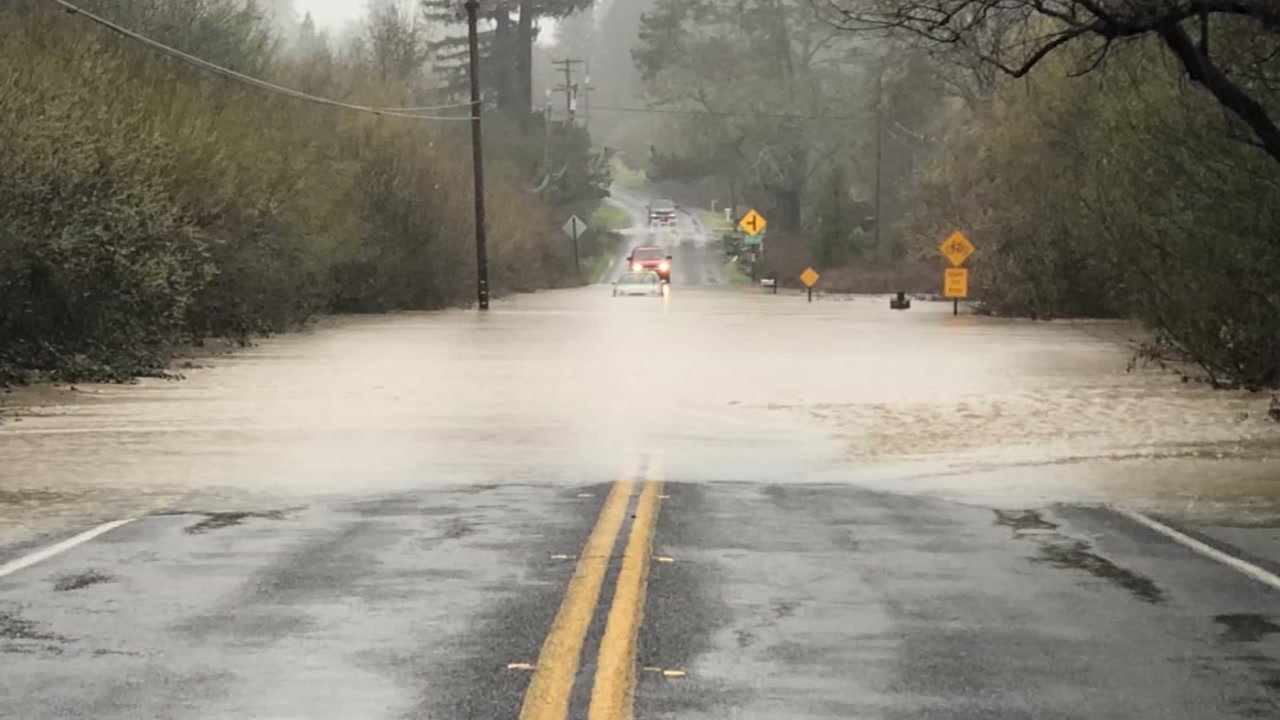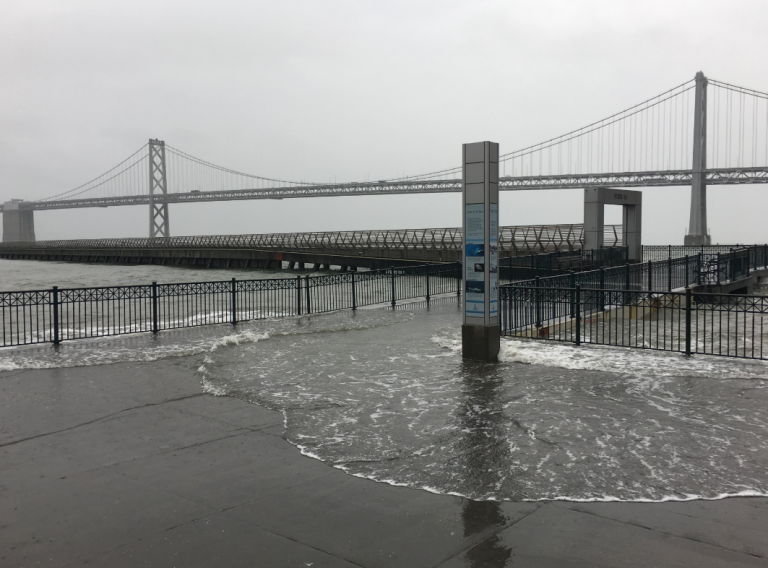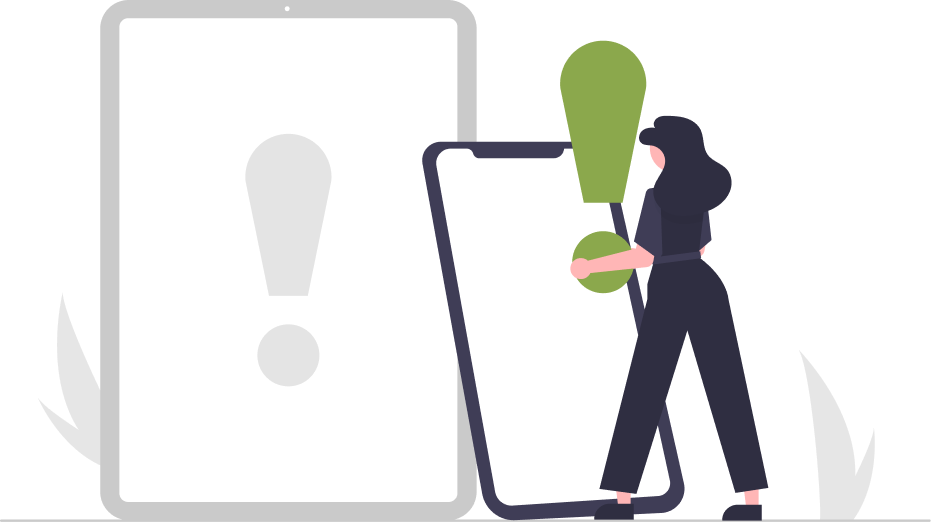
Flooding
Flooding is a temporary overflow of water onto land that is normally dry. Floods are the most common natural disaster in the United States. Failing to evacuate flooded areas or entering flood waters can lead to injury or death.
Flooding associated with severe storms has been among the most common hazards in the Bay Area during the period from 1950 to 2015, occurring nearly annually. Often-heavy rainfall brings many areas of localized flooding, especially in low lying areas. Flood hazards include:
Riverine, or overbank, flooding associated with floodplains, ranging from narrow, confined channels in the steep valleys of mountainous and hilly regions to wide, flat areas in valley and coastal regions;
Nuisance flooding caused by heavy precipitation/storm water in flat, low-lying, urbanized areas, resulting in inundation of basements, low-lying roads, and parking lots from street drainage;
Coastal flooding associated with Pacific Ocean storms;
Sea level rise.
Floods are a significant cause of death, injury and property loss in the United States annually.
Get Prepared
Know Your Risk for Floods
Visit FEMA's Flood Map Service Center to know types of flood risk in your area.
Sign up for AC Alert to get alerted about emergencies and other important community information.
Make an Emergency Plan
Make sure everyone in your household knows and understands what to do if you need to quickly evacuate.
Don’t forget a plan for the office, kids’ daycare and anywhere you frequent.
Purchase Flood Insurance
Purchase or renew a flood insurance policy. Homeowner’s insurance policies do not cover flooding. It typically takes up to 30 days for a policy to go into effect so the time to buy is well before a disaster.
Under a Flood Warning?
Evacuate immediately, if told to evacuate. Never drive around barricades. Local responders use them to safely direct traffic out of flooded areas.
Contact your healthcare provider If you are sick and need medical attention. Wait for further care instructions and shelter in place, if possible. If you are experiencing a medical emergency, call 9-1-1.
Listen to EAS, NOAA Weather Radio or local alerting systems for current emergency information and instructions regarding flooding.
Do not walk, swim or drive through flood waters. Turn Around. Don’t Drown!
Stay off bridges over fast-moving water. Fast-moving water can wash bridges away without warning.
Stay inside your car if it is trapped in rapidly moving water. Get on the roof if water is rising inside the car.
Get to the highest level if trapped in a building. Only get on the roof if necessary and once there signal for help. Do not climb into a closed attic to avoid getting trapped by rising floodwater.
After a Flood
Pay attention to authorities for information and instructions. Return home only when authorities say it is safe.
Avoid driving except in emergencies.
Wear heavy work gloves, protective clothing and boots during clean up and use appropriate face coverings or masks if cleaning mold or other debris.
People with asthma and other lung conditions and/or immune suppression should not enter buildings with indoor water leaks or mold growth that can be seen or smelled. Children should not take part in disaster cleanup work.
Be aware that snakes and other animals may be in your house.
Be aware of the risk of electrocution. Do not touch electrical equipment if it is wet or if you are standing in water. Turn off the electricity to prevent electric shock if it is safe to do so.
Avoid wading in floodwater, which can be contaminated and contain dangerous debris. Underground or downed power lines can also electrically charge the water.
Use a generator or other gasoline-powered machinery ONLY outdoors and away from windows.
Additional Resources

Sign Up for Emergency Alerts
Get alerted about emergencies and other important community information.



